Genus CyclopesGray, 1821 Mass 180 – 400 g (Adult) Length 36 – 45 cm (Adult) Tail length 17 – 24 cm (Adult) | Phylum Chordata Scientific name Cyclopes didactylus Rank Species Higher classification Cyclopes | |
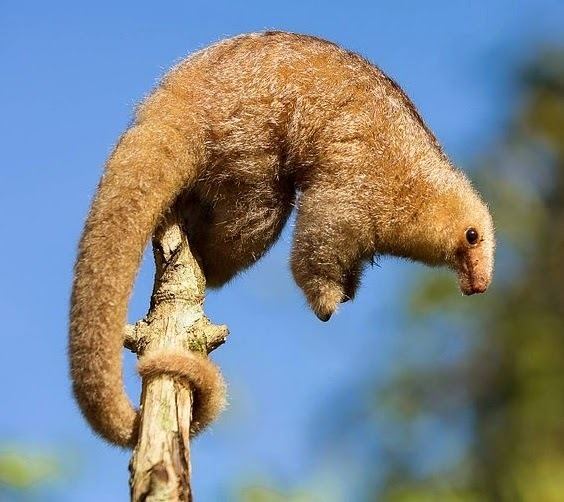 | ||
Similar | ||
Silky anteater hd
The silky anteater, or pygmy anteater, (Cyclopes didactylus) is a species of anteaters from Central and South America, the only living species in the genus Cyclopes and the family Cyclopedidae. A single extinct cyclopedid genus, Palaeomyrmidon, known from the Miocene of Argentina, may be ancestral to the living species.
Contents
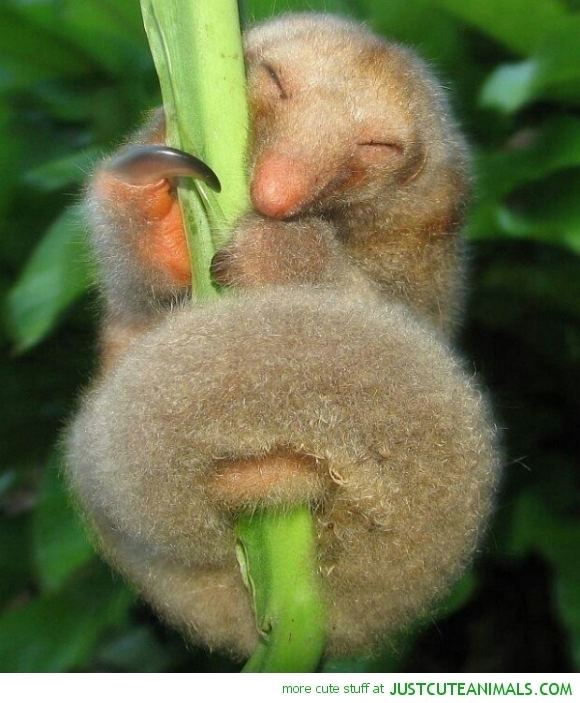
Silky anteater
Description
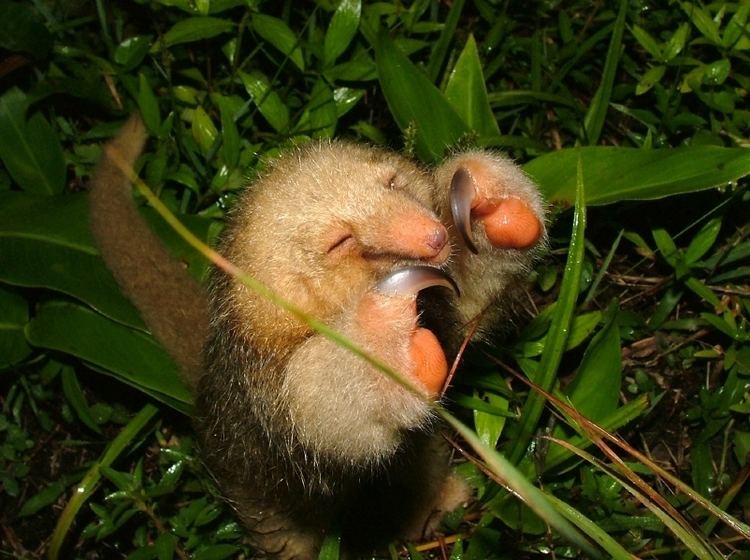
Silky anteaters are the smallest living anteaters, and have proportionately shorter faces and larger crania than other species. Adults have a total length ranging from 36 to 45 cm (14 to 18 in), including a tail 17 to 24 cm (6.7 to 9.4 in) long, and weigh from 175 to 400 g (6.2 to 14.1 oz). They have dense and soft fur, which ranges from grey to yellowish in colour, with a silvery sheen. Many subspecies have darker, often brownish, streaks, and paler underparts or limbs. The eyes are black, and the soles of the feet are red.
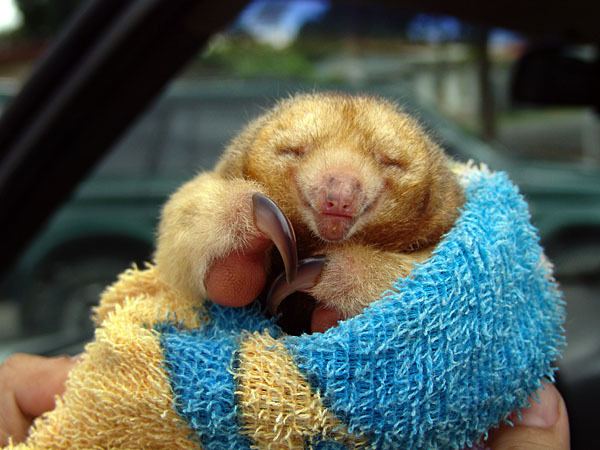
The scientific name translates roughly as "two-toed circle-foot", and refers to the presence of two claws on the fore feet, and their ability to almost encircle a branch to which the animal is clinging. The claws are present on the second and third toes, with the latter being much the larger. The fourth toe is very small, and lacks a claw, while the other two toes are vestigial or absent, and are not visible externally. The hind feet have four toes of equal length, each with long claws, and a vestigial hallux that is not externally visible. The ribs are broad and flat, overlapping to form an internal armoured casing that protects the chest.
They have partially prehensile tails.
Distribution and habitat
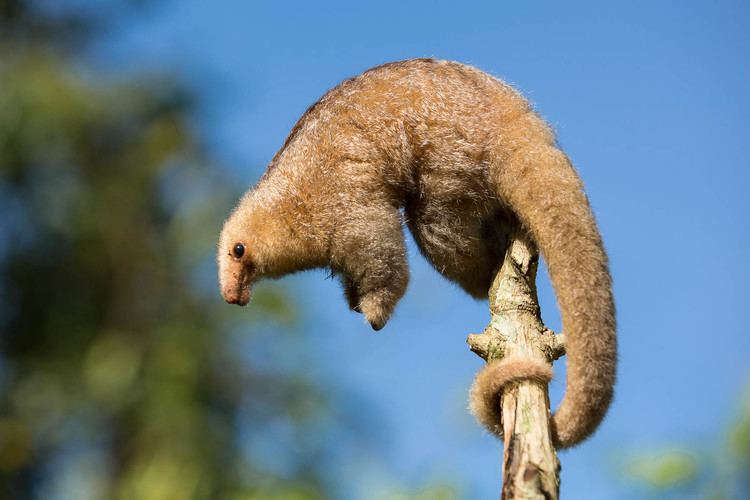
Silky anteaters are found from Oaxaca and southern Veracruz in Mexico, through Central America (except El Salvador), and south to Ecuador, and northern Peru, Bolivia, and Brazil. A smaller, isolated population is also found in the northern Atlantic Forest of eastern Brazil, and there are also silky anteaters on the island of Trinidad. They inhabit a range of different forest types, including semideciduous, tropical evergreen, and mangrove forests, from sea level to 1,500 m (4,900 ft).
The seven recognized subspecies of C. didactylus are:
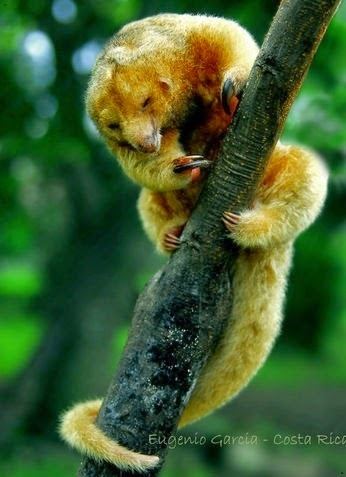
Behaviour
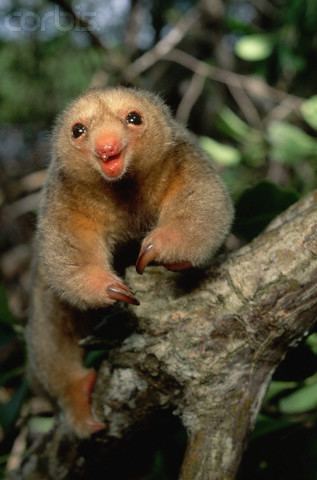
Silky anteaters are nocturnal and arboreal, found in lowland rainforests with continuous canopy, where they can move to different places without the need to descend from trees. They can occur at fairly high densities of 0.77 individuals/ha, for example, in some areas. Females have smaller home ranges than males.
The silky anteater is a slow-moving animal and feeds mainly on ants, eating between 700 and 5,000 a day. Sometimes, it also feeds on other insects, such as termites and small coccinellid beetles. The silky anteater defecates once a day. Some of those feces contain a large quantity of exoskeleton fragments of insects, indicating the silky anteater does not possess either chitinase or chitobiase, digestive enzymes found in insectivorous bats.
It is a solitary animal and gives birth to a single young, up to twice a year. The young are born already furred, and with a similar colour pattern to the adults. They begin to take solid food when they are about one-third of the adult mass. The young is usually placed inside a nest of dead leaves built in tree holes, and left for about eight hours each night.
Some authors suggest the silky anteater usually dwells in silk cotton trees (genus Ceiba). Because of its resemblance to the seed pod fibers of these trees, it can use the trees as camouflage and avoid attacks of predators such as hawks and, especially, harpy eagles. During the day, they typically sleep curled up in a ball. Although they are rarely seen in the forest, they can be found more easily when they are foraging on lianas at night.
When threatened, the silky anteater, like other anteaters, defends itself by standing on its hind legs and holding its fore feet close to its face so it can strike any animal that tries to get close with its sharp claws.
